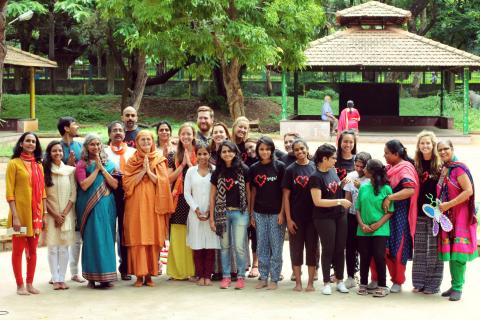India is the country with the 3rd largest population of Muslims, after only Indonesia and neighbor Pakistan (with whom relations might just get a little better thanks to Pakistan’s brand new Foreign Minister). There are a number of Muslims right here in my area, many wearing full-burqas, and some a little less orthodox in attire. So I am not at all surprised that my Muslim student (the one I’ve mentioned before on this blog) is unable to attend classes due to her devotion to her religion. Starting today, Muslims all over the world are observing Ramadan, a month-long fasting during daylight hours. How does yoga view fasting? Actually yoga and ayurveda have forms of fasting which help to cleanse the body, making it ready for higher spiritual practices such as meditation. In such fasting, the devotee eats or drinks certain foods which help this process. In Islam, the fasting of Ramadan is different. It lasts for a month and it’s from dawn to dusk. Designed to bring one closer to God, Ramadan cultivates characteristics such as patience, humility, and surrender to God. In several of my previous posts, I have discuss how yoga can also help develop patience and humility. Ramadan does the same, because a follower must endure the hardship of fasting and wait for the feast. It also develops humility and forgiveness, because during the hardship of the fasting, the follower realizes that he/ she is no greater than anyone else. And in fact, one must surrender to God to achieve anything. Surrender to God is the last niyama, Iswara Pranidhana. These two traditions are similar in this, because ultimately, in order to fast, and in order to have a feast, it is not upto you, but upto God. Your body, regardless of how you train it, is up to God. God makes the final decisions, and we are required to surrender to the will of God in either yogic customs or during Ramadan. To all the Muslim readers out there, Ramadan Kareem! Ramadan Mubarak! by Sowmya Ayyar
